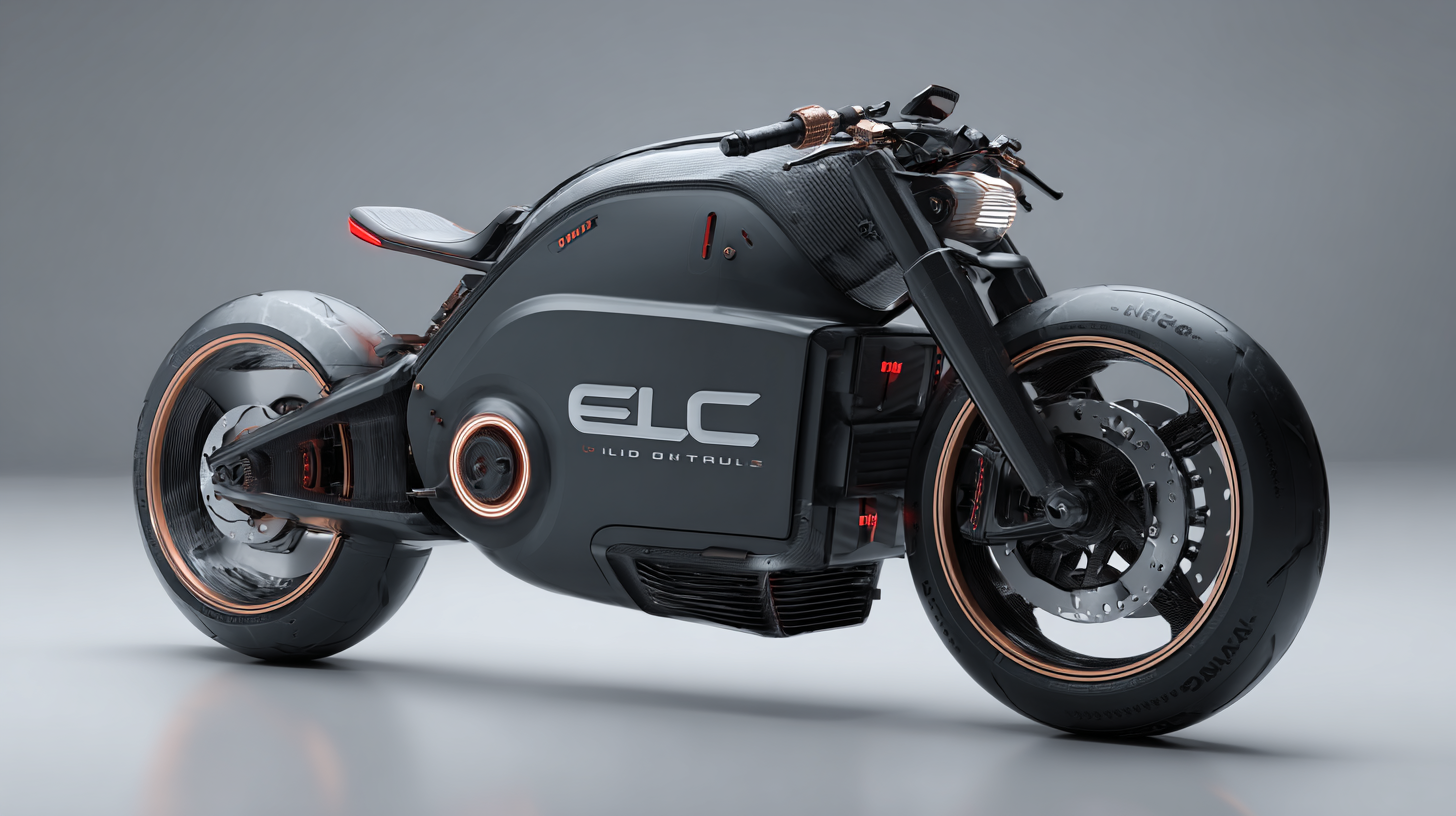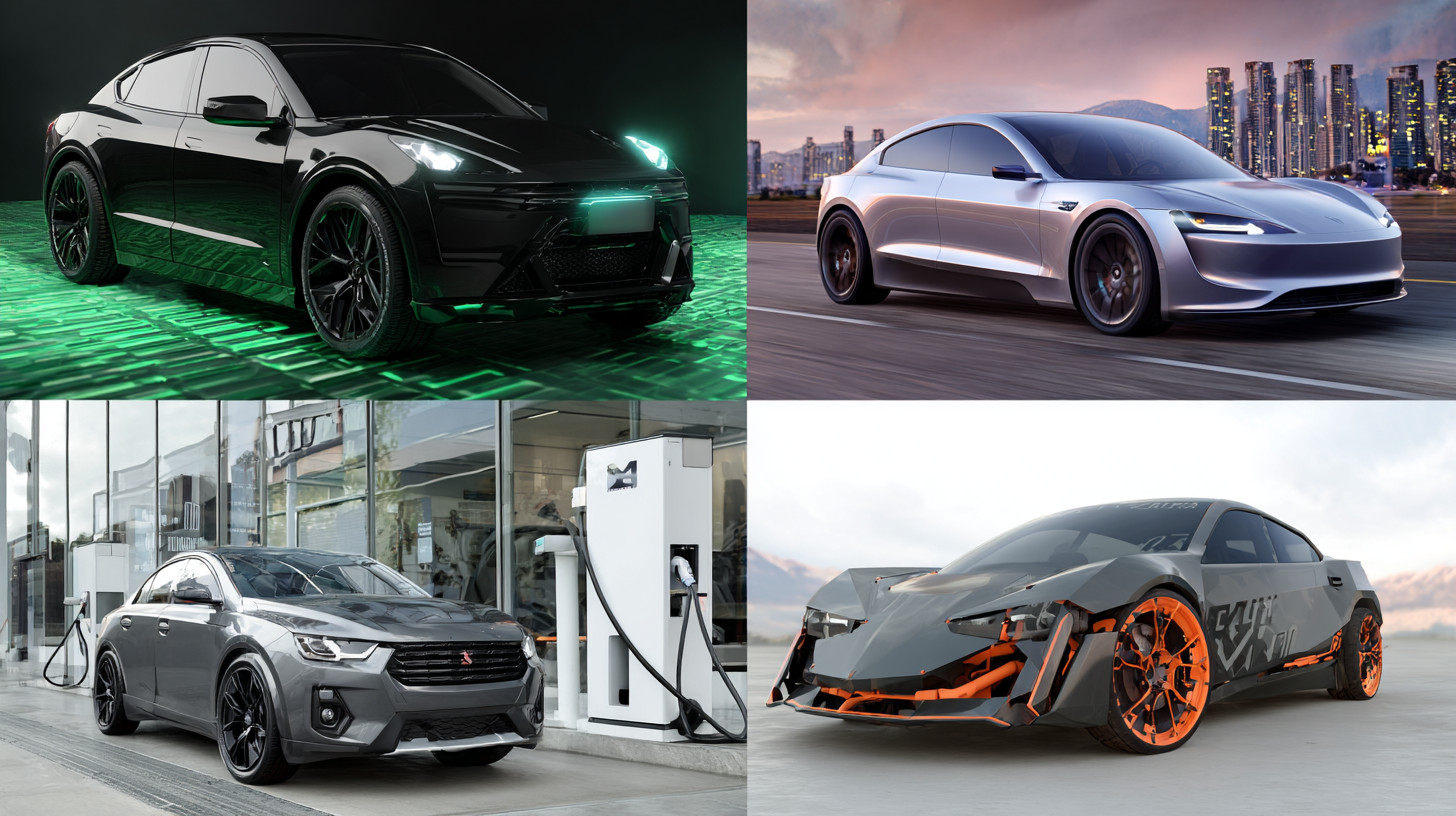In an era characterized by rapid technological advancements, the realm of electric motors has undergone a significant transformation, positioning Elc Motors at the forefront of innovation. As we approach 2025, the latest breakthroughs in the design, efficiency, and application of Elc Motors are not only enhancing performance but also paving the way for a more sustainable future. From electric vehicles to renewable energy solutions, these innovations are set to revolutionize various industries, making them an essential topic of discussion for engineers, manufacturers, and consumers alike.
In this guide, we will explore the top 10 Elc Motors innovations you need to know about for 2025. Each innovation represents a leap forward, addressing critical industry challenges such as energy consumption, durability, and integration with smart technologies. By understanding these advancements, stakeholders can better navigate the evolving landscape of electric motors and leverage these technologies to enhance their projects and initiatives. Join us as we delve into the most impactful developments that will define the future of Elc Motors and their applications across multiple sectors.

As we look ahead to 2025, the electric motor industry is poised for transformative innovations that promise to enhance efficiency dramatically. Among the leading trends, the integration of advanced materials such as high-temperature superconductors and lightweight composites stands out. These materials not only reduce energy loss but also enable motors to operate at optimal temperatures, significantly boosting performance. The shift towards more sustainable production methods also contributes to these advancements, as manufacturers increasingly focus on reducing their environmental footprint.
Moreover, the application of artificial intelligence and machine learning in electric motor design is revolutionizing efficiency outcomes. By utilizing real-time data to optimize performance, these technologies allow motors to adjust dynamically to varying operational conditions, maximizing efficiency while minimizing wear and tear. Coupled with improved battery technologies, these innovations are paving the way for electric motors that are not only more efficient but also more resilient and capable of supporting the growing demand for sustainable energy solutions across various sectors.

Recent advancements in electric motor cooling technologies are crucial for enhancing the performance and efficiency of electric vehicles (EVs). As competition in the EV market intensifies, innovative cooling systems are emerging to address the challenges posed by increased power demands and heat generation. Effective cooling solutions not only prolong the life of electric motors but also optimize their performance, allowing for higher torque outputs and improved overall efficiency.
One notable innovation is the development of advanced liquid cooling systems that maintain optimal operating temperatures even under extreme conditions. These systems use specialized fluids that absorb and dissipate heat more effectively than traditional cooling methods. Additionally, the integration of smart thermal management systems, which leverage real-time data to regulate temperature, ensures that electric motors operate within ideal thermal ranges. Such advancements position companies at the forefront of the EV industry, ultimately leading to higher consumer satisfaction and a more sustainable future for transportation.
Innovative materials are at the forefront of revolutionizing electric motor design, paving the way for the next generation of electric vehicles (EVs) and hybrid propulsion technologies. One of the most significant advancements is the development of compact axial-flux electric motors. These motors boast a higher power density, enabling manufacturers to create lighter and more efficient vehicles. According to industry reports, axial-flux motors can achieve up to 50% more efficiency compared to traditional radial motors, leading to enhanced performance and an extended driving range for EVs.

Furthermore, the collaboration between companies focusing on magnet-free electric motor technology signifies a critical shift toward sustainable electrification. The strategic partnerships formed in the industry aim to scale production capabilities, thus making it possible to reduce reliance on rare earth materials while increasing the efficiency of electric motors. Recent studies indicate that the use of advanced materials, such as nanocrystalline materials, enhances not only the performance but also the longevity of electric motors, asserting their potential to shape the future of the EV market.
Additionally, the application of innovative materials in electric motor production signifies a broader trend towards enhanced sustainability within the automotive sector. As manufacturers explore the benefits of using elements like niobium in electric motors, it becomes evident that the industry is on the cusp of a transformation that prioritizes both performance and eco-friendliness, ultimately leading to a more robust electric mobility ecosystem.
The integration of Internet of Things (IoT) technology with smart electric motors is poised to revolutionize performance standards across various industries. This convergence allows for real-time data collection and analysis, facilitating predictive maintenance and optimizing operational efficiency. By embedding sensors within electric motors, manufacturers can monitor parameters such as temperature, speed, and vibration levels, providing valuable insights that enable proactive interventions before issues escalate.
Moreover, IoT connectivity enhances the adaptability of electric motors in dynamic environments. Smart electric motors can adjust their performance based on the data received from connected devices, leading to improved energy efficiency and reduced operational costs. This intelligent adaptability not only streamlines processes but also supports sustainability goals by minimizing energy waste. As industries move towards smarter manufacturing practices, the integration of IoT with electric motors will be a cornerstone in driving innovation and enhancing productivity, marking a significant advancement in motor technology.
| Innovation | Description | Key Features | Expected Impact |
|---|---|---|---|
| Smart Motor Controllers | Controllers that adjust motor functions in real-time based on performance data. | Real-time monitoring, adaptive response, energy efficiency. | Enhanced performance and reduced energy costs. |
| Predictive Maintenance Sensors | Sensors that predict motor failures by analyzing operational data. | Failure prediction, reduced downtime, maintenance alerts. | Minimized operational interruptions and costs. |
| IoT Integration for Remote Monitoring | Cloud-based systems allowing remote access to motor data. | Remote diagnostics, centralized control, data analytics. | Increased accessibility and improved decision-making. |
| Enhanced Energy Harvesting | Technologies that optimize energy usage and reclaim waste energy. | Energy efficiency, self-sustaining operations. | Reduced operational costs and improved sustainability. |
| Advanced Cooling Systems | Smart cooling solutions to prevent overheating in motors. | Real-time temperature management, efficiency gains. | Increased motor lifespan and enhanced reliability. |
| Embedded AI Optimization | AI algorithms to analyze performance and optimize operations. | Self-learning, continuous improvement, predictive modeling. | Higher efficiency and optimized use of resources. |
| Modular Motor Design | Design philosophy allowing for easy upgrades and maintenance. | Scalability, easy assembly, reduced costs. | Increased flexibility in operations and cost control. |
| Biomimetic Motor Technology | Motors designed based on biological systems for increased efficiency. | Natural efficiency, lightweight design, reduced friction. | Potential for breakthrough advancements in energy savings. |
| Wireless Power Transfer | Systems for transferring power without physical connections. | Convenience, improved design flexibility, reduced wear. | Enhanced reliability and expansion of motor applications. |
| Eco-friendly Materials | Use of sustainable materials in motor construction. | Sustainability, reduced environmental impact, compliance. | Alignment with global sustainability initiatives. |
The evolution of electric motor manufacturing is heavily influenced by next-gen technologies designed to enhance sustainability and efficiency. Innovative techniques such as additive manufacturing, or 3D printing, have emerged as game-changers in the production of electric motors. This method allows for the creation of intricate geometries and optimized designs that traditional manufacturing cannot achieve, reducing material waste significantly. Moreover, 3D printing facilitates rapid prototyping, enabling manufacturers to accelerate the development process and bring more advanced motor technologies to the market faster.
Another pivotal innovation is the implementation of advanced materials, such as lightweight composites and high-conductivity metals, which are designed specifically for electric motors. These materials not only enhance performance but also promote energy efficiency by minimizing energy losses during operation. Additionally, the integration of smart manufacturing technologies, including IoT and AI, plays a critical role in streamlining production processes. These technologies provide real-time data analysis, improving predictive maintenance and ensuring that every motor produced meets the highest standards of sustainability. Together, these next-gen manufacturing techniques are set to revolutionize the electric motor industry, aligning it with contemporary demands for eco-friendliness and high performance.
